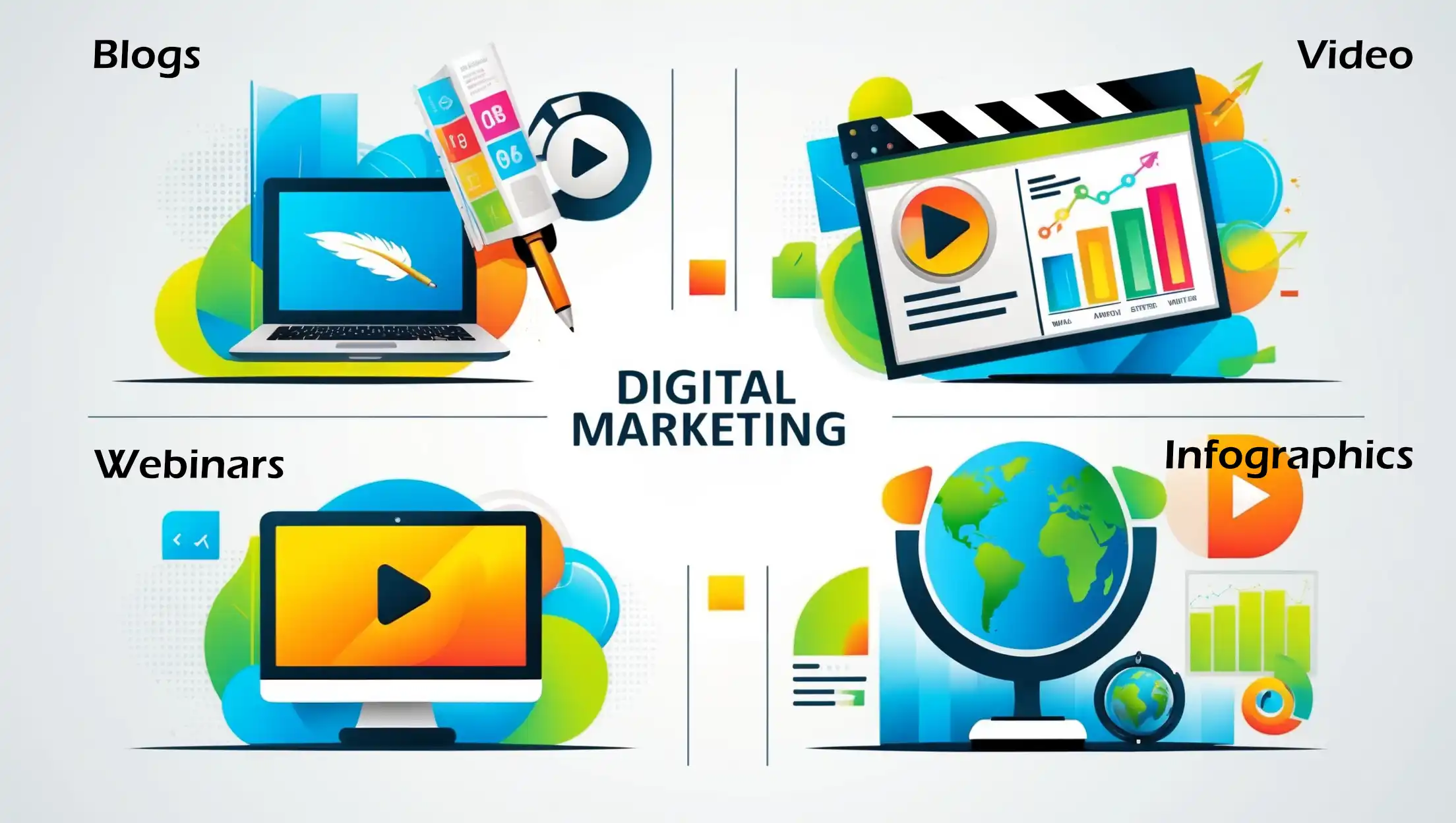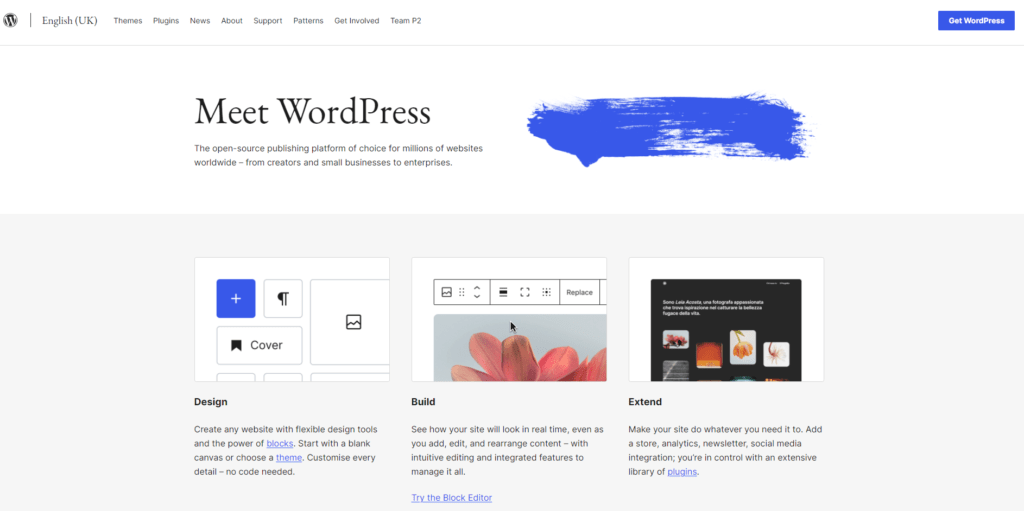
Reach New Heights: Digital Marketing Channels
How to Skyrocket Your ROI: Introduction to Digital Marketing
Key Takeaways
- Digital marketing is crucial in today’s business world.
- SEO boosts online visibility and drives organic traffic.
- PPC advertising delivers immediate results and visibility.
- Content marketing engages customers with valuable content.
- Social media marketing connects businesses with their audience.
- Email marketing nurtures leads and retains customers.
- Affiliate marketing expands reach through revenue sharing.
- AI, voice search, and influencer marketing are key emerging trends.
- Data privacy and ethical marketing are growing in importance.
In today’s fast-paced business world, digital marketing has become essential for success. Unlike traditional methods, it harnesses the internet’s power to reach a worldwide audience.
Moreover, this modern approach allows companies to engage with customers in creative ways. For instance, businesses can customise campaigns for specific groups and track their effectiveness instantly.
Furthermore, digital marketing offers flexibility that traditional methods can’t match. As a result, companies can adapt quickly to changing market conditions and consumer preferences.
In conclusion, embracing digital marketing is crucial for businesses aiming to thrive in the current landscape. Therefore, companies should consider investing in this powerful tool to stay competitive and relevant.
Digital Marketing’s Role:
Digital marketing has changed how brands connect with their audience. With smartphones and social media, people now expect quick, personalised interactions from businesses.
As a result, companies of all sizes are investing heavily in digital marketing strategies. These include SEO, PPC advertising, social media marketing, and content creation.
Furthermore, these tactics help brands stay competitive and relevant in today’s digital world. The main aims are to boost brand awareness, generate leads, and increase sales.
Moreover, by using various online channels, businesses can reach more people. This approach helps build strong customer relationships and turn prospects into loyal fans.
In conclusion, digital marketing is essential for modern businesses. It offers powerful tools to engage customers and grow in the digital age.
Digital Marketing & SEO:
Effective SEO practices boost a company’s visibility online. As a result, their website ranks higher on search engines, making it easier for potential customers to find.
Moreover, targeted content and ads attract qualified leads. These prospects are more likely to convert, ensuring a steady flow of revenue.
Furthermore, digital marketing has transformed how businesses engage with their audience. It offers a flexible and cost-effective way to achieve marketing goals.
Additionally, by embracing digital strategies, companies can navigate modern consumer behaviour. This approach helps them secure their place in a competitive market.
In conclusion, digital marketing and SEO are crucial for business success. They provide powerful tools to reach and engage customers effectively.
Search Engine Optimisation (SEO):
Search Engine Optimisation (SEO) is a fundamental pillar of digital marketing. It helps businesses enhance their online visibility and attract organic traffic.
SEO involves optimising various elements of a website to make it more appealing to search engines like Google.
This process improves its ranking in search engine results pages (SERPs). Higher rankings significantly increase the likelihood of attracting potential customers.
Keyword Research
One key component of SEO is keyword research. This process identifies and targets the search terms that potential customers use.
By strategically incorporating these keywords into website content, meta descriptions, and headers, businesses can align their pages with user search intent.
This often starts with tools like Google Keyword Planner or SEMrush to gather data on keyword volume and competition.
On-page Optimisation
Next is on-page optimisation, which refines individual web pages to rank higher and earn more relevant traffic.
This includes optimising title tags, meta descriptions, and header tags. Additionally, ensuring content is high-quality and relevant to users’ searches is essential.
On-page SEO also involves enhancing the site’s structure, improving internal linking, and ensuring mobile-friendliness and faster page load times.
Off-page SEO
Off-page SEO tactics focus on acquiring backlinks from reputable sites. These backlinks act as votes of confidence and authority in the eyes of search engines.
The quality, relevance, and quantity of these backlinks can significantly influence a website’s ranking. Effective link-building strategies include guest blogging, creating shareable content, and engaging in online communities.
Search engine algorithms are continually updated and play a crucial role in determining how pages are ranked. Staying abreast of these updates is essential, as newer algorithms tend to emphasise user experience, content quality, and site speed.
Resources like the Google Search Central Blog and SEO forums provide valuable insights and updates. They help keep strategies aligned with current best practices.
Great SEO »»» Skyrocket Your ROI
The benefits of a well-executed SEO strategy are profound. As a non-paid source of traffic, organic visits are highly cost-effective in the long term.
An optimised website consistently attracts visitors, builds authority in its niche, and offers sustainable growth far beyond initial digital marketing investments.
Pay-Per-Click (PPC) Advertising:
Pay-Per-Click (PPC) advertising is a pivotal strategy within the digital marketing landscape. This model allows advertisers to display ads in search engine results and other digital platforms, paying a fee each time a user clicks on their advertisement.
PPC advertising is notable for its ability to deliver immediate visibility and results, making it an essential component of a comprehensive marketing plan.
Central to PPC advertising is the concept of bidding on keywords. Advertisers select specific keywords relevant to their products or services, and when users search for these terms, the advertisers’ ads are displayed.
The placement of these ads is determined through an auction process. In this process, advertisers place bids on the maximum amount they are willing to pay per click.
However, the highest bid doesn’t always guarantee the top spot; factors such as ad relevance and quality score also play vital roles in the auction outcome.
Google Ads & Bing Ads:
Google Ads and Bing Ads are among the most widely used platforms for PPC campaigns. These platforms offer robust tools for targeting and measurement, allowing advertisers to reach their desired audience effectively.
Crafting effective ad copy is crucial, as it directly influences the ad’s performance. Compelling headlines, clear calls to action, and relevance to the targeted keywords are essential elements of high-performing ad copy.
Budgets Are Key
Setting budgets in PPC is another critical aspect, as it controls how much is spent on campaigns. Advertisers can set daily or monthly spending limits to ensure they stay within their financial boundaries while adjusting bids and targeting options to maximize return on investment (ROI).
Metrics, Metrics, Metrics!
Measuring ROI in PPC involves tracking key metrics such as click-through rates (CTR), conversion rates, and cost per acquisition (CPA). These metrics provide insights into the effectiveness of the campaigns and inform future optimizations.
Compared to other digital marketing channels, PPC offers the advantage of immediate results. Once a campaign is activated, ads start appearing, and traffic can be generated right away.
This immediate impact makes PPC particularly beneficial for time-sensitive promotions and for businesses seeking quick visibility in competitive markets.
Content Marketing:
Content marketing serves as a cornerstone of digital marketing, playing a pivotal role in attracting and engaging customers.
It revolves around the creation and distribution of valuable, relevant, and consistent content designed to captivate a specified audience.
The primary goal is to drive profitable customer action, establishing trust and loyalty over time.
Types of Content
Various types of content can be utilised within a content marketing strategy.

Blogs are a popular choice, offering businesses a platform to share expert knowledge and insights while boosting search engine rankings through keyword optimisation.
Videos, another powerful content format, can engage audiences with visual storytelling and demonstrations, often leading to higher conversion rates.
Infographics are particularly effective for presenting data and complex information in an easily digestible visual format.
Webinars allow for real-time interaction with the audience, providing comprehensive insights into specific topics while fostering a sense of community and engagement.
Quality Matters
Creating high-quality, valuable content tailored to the target audience is paramount.
Understanding the needs, preferences, and pain points of the audience enables marketers to craft content that resonates deeply, encouraging sharing and repeat visits.
This requires thorough research and a strategic approach to content planning, ensuring each piece aligns with the overall objectives and brand message.
Use Multiple Channels
Effective content distribution and promotion are crucial for maximising reach and impact.
Leveraging various channels such as social media, email marketing, and SEO (search engine optimisation) ensures the content is visible and accessible to the target audience.
Collaborations with influencers and industry leaders can amplify content reach and credibility.
Additionally, repurposing content into different formats can extend its lifecycle and reach new segments of the audience.
Analytics are Important
Measuring the effectiveness of content marketing efforts involves tracking key performance indicators (KPIs) such as engagement rates, website traffic, conversions, and social shares.
Analytics tools can provide valuable insights into what content is resonating with the audience, allowing for continuous optimisation and refinement of the content strategy.
By consistently analysing performance data, marketers can make informed decisions and enhancements that drive better results.
Role of Social Media:
Social media marketing has revolutionized the landscape of digital marketing by offering unprecedented opportunities for businesses to connect and engage with their target audiences.
Leveraging platforms like Facebook, Instagram, LinkedIn, Twitter, and TikTok, companies can build robust online presences, foster customer relationships, and drive substantial traffic to their websites.
Each platform has its unique demographics and features that businesses can strategically utilise to optimise their marketing efforts.
Facebook remains one of the most potent social media platforms with a diverse user base that spans across various age groups. It offers features like Facebook Pages and Groups, enabling businesses to create detailed profiles, share updates, and build communities.
Facebook Ads is a powerful tool that allows for targeted advertising based on users’ interests, behaviours, and demographics.
Businesses can post diverse content formats, including text updates, photos, videos, and live streams, making it an adaptable platform for different marketing strategies.
Primarily popular among younger audiences, Instagram is a visually-driven platform known for its photo and video sharing capabilities.
Instagram Stories, IGTV, and Reels provide multiple avenues for creating engaging, short-form, and long-form content.
Its strong emphasis on visual aesthetics makes it ideal for brands focusing on fashion, lifestyle, food, and travel.
With Instagram Shopping, businesses can tag products directly in their posts, simplifying the path to purchase for users.
LinkedIn is the premier professional networking platform, making it a vital space for B2B marketing. Its user base mostly comprises professionals, job seekers, and industry leaders. Businesses can leverage LinkedIn for sharing industry insights, company updates, and thought leadership content.
LinkedIn Ads allows for precision targeting based on job titles, industries, and company sizes, ensuring that businesses can reach their desired professional audiences effectively.
Twitter/X
Twitter/X is renowned for its real-time communication and concise messaging format, with tweets limited to 280 characters.
This platform is ideal for sharing news, updates, and engaging in conversations with followers.
Hashtags play a crucial role in content discovery, and Twitter Ads offers various ad formats such as Promoted Tweets, Accounts, and Trends.
Businesses can use Twitter to build brand personality, participate in trending discussions, and provide timely customer support.
TikTok
TikTok has emerged as a powerful platform for reaching younger audiences through engaging short-form videos.
Known for its viral trends and creative content, TikTok offers a unique space for businesses to showcase their products and services in an entertaining manner.
Leveraging TikTok’s algorithms, brands can get their content discovered by a larger audience. Ads on TikTok, including In-Feed Ads, Branded Hashtag Challenges, and Branded Effects, provide various avenues for businesses to create immersive experiences.
To effectively leverage social media marketing, businesses should focus on creating compelling content that resonates with their audience.
Understanding each platform’s unique features and user demographics is crucial for tailoring content and strategies.
Regularly engaging with followers, monitoring analytics, and adjusting approaches based on performance data are essential practices for managing successful social media campaigns.
Email Marketing:
Email marketing remains a cornerstone in the digital marketing ecosystem, continually demonstrating its effectiveness in nurturing leads, retaining customers, and promoting products or services.
One of the key reasons for its enduring relevance is its direct approach, allowing businesses to communicate one-on-one with their target audience right in their inboxes.
However, for email marketing to deliver optimal results, a well-strategized approach is essential.
Building Your List
Building a quality email list is foundational to effective email marketing. Instead of buying email lists, businesses should focus on organic growth by offering value propositions that entice users to subscribe. These could range from exclusive content, discounts, or informative newsletters.
Segmentation
Once a quality list is established, segmentation becomes crucial. Segmenting audiences into various categories, such as interests, demographics, or past purchasing behaviour, allows for highly targeted and relevant communications that resonate more with recipients, increasing engagement and conversion rates.
Crafting Your Campaign
The crafting of email campaigns requires a blend of creativity and analytical thinking. Subject lines, for example, play a decisive role in open rates. They should be compelling yet concise to capture immediate attention.
Great Design Matters
Beyond the subject line, the design and layout of the email play significant roles. Clean, mobile-responsive designs paired with visually appealing elements prompt recipients to read through the email content.
Treat Everyone as an Individual
Personalisation techniques, such as addressing recipients by their first names and tailoring content to their preferences, further enhance the connection with the audience.
Metrics Again!
Finally, measuring email performance through key metrics like open rates, click-through rates, conversion rates, and unsubscribe rates provides valuable insights. These metrics help businesses understand what works and what doesn’t, enabling continuous refinement and optimisation of future campaigns.
By leveraging A/B testing, businesses can experiment with different variables such as subject lines, content, and call-to-actions to determine the most effective combinations.
Affiliate Marketing:
Affiliate marketing stands as a prominent performance-based marketing tactic where businesses reward affiliates for driving traffic or sales through their promotional efforts. Essentially, it functions on a revenue-sharing model: businesses pay affiliates a commission based on the agreed-upon actions, such as sales, clicks, or leads.
This form of marketing offers numerous benefits for both businesses and affiliates.
For Business
For businesses, affiliate marketing provides a cost-effective means to expand reach and drive sales. Since payment is tied directly to performance, businesses only incur costs when desired outcomes are achieved, optimizing their marketing budgets.
For Affiliates
Affiliates, on the other hand, benefit from earning passive income by promoting products or services that align with their audience’s interests. This symbiotic relationship ensures mutual growth and profitability.
Popular affiliate programs and networks include giants such as Amazon Associates, ShareASale, and CJ Affiliate (formerly Commission Junction). These platforms connect businesses with a vast network of affiliates, simplifying the process of establishing and managing affiliate relationships.
Through these networks, businesses can leverage existing affiliate expertise and platforms to widen their marketing reach without the need for extensive in-house resources.
Affiliate Marketing Steps
Setting up an affiliate marketing program involves several strategic steps. Initially, businesses need to define their objectives and identify suitable affiliate partners whose audience aligns with their target market. Selecting the right affiliate network is crucial to access necessary tools and resources.
Once partners are onboard, transparent and attractive commission structures should be established to motivate affiliate participation and performance.
Managing relationships with affiliates is key to the success of an affiliate marketing program. Regular communication, providing marketing materials, and offering prompt support can foster strong, collaborative partnerships.
Tracking the success of campaigns requires robust analytics to monitor performance metrics such as click-through rates, conversion rates, and sales figures. Utilising affiliate tracking software can streamline this process, ensuring accurate and timely reporting for both parties.
By adhering to these best practices, businesses can capitalise on the benefits of affiliate marketing, creating a mutually beneficial ecosystem that drives growth and profitability.
Emerging Trends and Future Directions in Digital Marketing:
AI is Growing in Importance
In the dynamic world of digital marketing, staying attuned to emerging trends and future directions is crucial for maintaining a competitive edge. One of the most salient trends reshaping the landscape is the integration of artificial intelligence (AI).
AI technologies, such as machine learning algorithms and chatbots, are increasingly being deployed to enhance customer experiences and streamline marketing efforts. By leveraging AI, businesses can achieve greater personalization, predictive analytics, and more efficient customer service, fundamentally transforming their current strategies.
Voice Search
Voice search is another rapidly growing trend that businesses must consider. With the proliferation of smart speakers and virtual assistants like Alexa and Google Assistant, optimising content for voice search is becoming imperative.

Voice search optimisation requires a different approach than traditional SEO, focusing on natural language and conversational queries.
Brands that adapt their strategies to incorporate voice search will likely improve their visibility and accessibility, catering to an audience that prefers hands-free, immediate information retrieval.
Influencer Marketing
Influencer marketing continues to mature as a powerful tactic within digital marketing. As consumer trust in traditional advertising wanes, influencers offer a more authentic and relatable way to reach target audiences.
Collaborations with influencers can boost brand credibility and expand reach, but the key lies in choosing influencers whose values align with the brand’s message. Micro-influencers, in particular, are gaining traction due to their higher engagement rates and more niche, loyal followings.
The Future of Digital Marketing:
Looking ahead, we can expect the rise of augmented reality (AR) and virtual reality (VR) experiences, particularly in retail and entertainment sectors. These technologies offer immersive experiences that can engage customers in novel ways, from virtual try-on features to interactive ads that transcend traditional media formats.

Additionally, the growing importance of data privacy and ethical marketing practices will drive businesses to adopt more transparent and customer-centric approaches.
To stay ahead in this ever-evolving field, businesses should commit to continuous learning and adaptability. Investing in upskilling the marketing team, staying updated with industry advancements, and experimenting with innovative tools and strategies are all vital for thriving in the future digital marketing ecosystem.
By embracing these emerging trends and future directions, companies can build more resilient and adaptive marketing strategies, ensuring sustained growth and relevance in the digital age.





